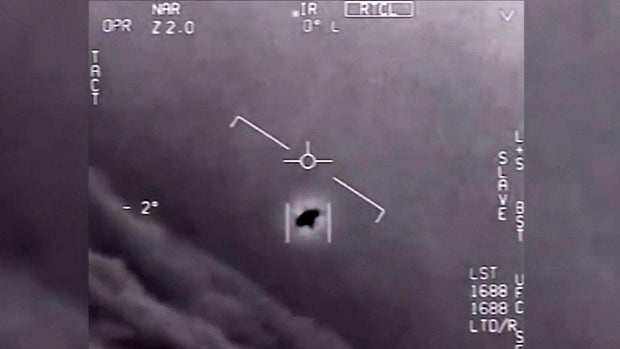UFO sightings should not be dismissed because they could in fact be surveillance drones or weapons, say Japanese lawmakers who launched a group on Thursday to probe the matter. The investigation comes less than a year after the U.S. Defense Department issued a report calling the region a “hotspot” for sightings of the mysterious objects.
The non-partisan group, which counts former defense ministers among its 80-plus members, will urge Japan to ramp up abilities to detect and analyze unidentified anomalous phenomena (UAP), more commonly known as UFOs, or unidentified flying objects.
Although the phenomenon is often associated with little green men in the popular imagination, it has become a hot political topic in the United States.
The Pentagon said last year it was examining 510 UFO reports — more than triple the number in its 2021 file.
The Japanese parliamentarians hope to bring the domestic perception of UAP in line with its ally’s following several scares related to suspected surveillance operations.
“It is extremely irresponsible of us to be resigned to the fact that something is unknowable, and to keep turning a blind eye to the unidentified,” group member and former defense minister Yasukazu Hamada said before the launch.
In an embarrassment for Japan’s defense ministry, unauthorized footage of a docked helicopter destroyer recently spread on Chinese social media after an apparent drone intrusion into a military facility.
And last year, the ministry said it “strongly presumes” that flying objects sighted in Japanese skies in recent years were surveillance balloons sent by China.
In Japan, UFOs have long been seen as “an occult matter that has nothing to do with politics,” opposition lawmaker Yoshiharu Asakawa, a pivotal member of the group, has said.
But if they turn out to be “cutting-edge secret weapons or spying drones in disguise, they can pose a significant threat to our nation’s security.”
“Hotspot” for UAP sightings
The U.S. Defense Department in 2022 established the All-Domain Anomaly Resolution Office (AARO) to investigate UAP, and the following year launched a website to provide the public with declassified information about the mysterious objects.
An AARO report last year designated the region stretching from western Japan to China as a “hotspot” for UAP sightings, based on trends between 1996 and 2023.
It later concluded in a congressionally ordered 60-page review that there was no evidence of alien technology, or attempts by the US government to hide it from the public.
The Japanese lawmakers will push for the country to create an equivalent to the Pentagon’s AARO and to further boost intelligence cooperation with the United States.
Christopher Mellon, a UAP expert and former U.S. intelligence official, hailed the group’s launch as “remarkable.”
From drones to hypersonic vehicles, the war in Ukraine has shown that “unmanned weapons and artificial intelligence are creating very serious new challenges”, Mellon told the Japanese MPs in an online speech.
In December, one U.S. Air Force base was subjected to a weeks-long, mysterious intrusion by drones, but “we still don’t know where they were coming from,” he said.
A “UAP effort contributes to our understanding of these kinds of issues.”
In the U.S., Congress has shown an increased interest in learning more about the detection and reporting of UAPs. A House subcommittee held a headline-grabbing public hearing last summer featuring a former intelligence officer and two pilots who testified about their experience with UAPs. The lawmakers have continued to demand answers, and recently held a classified briefing with the inspector general of the intelligence community.
In September, an independent group of scientist and experts convened by NASA found no evidence that UAPs are “extraterrestrial” in nature, but stressed that better data is needed to understand some encounters that have defied explanation.
NASA formed the group of 16 experts in 2022 to examine how the space agency can better contribute to the scientific understanding of the objects, which have been reported by hundreds of military and commercial pilots.
Eleanor Watson and Stefan Becket contributed to this report.

